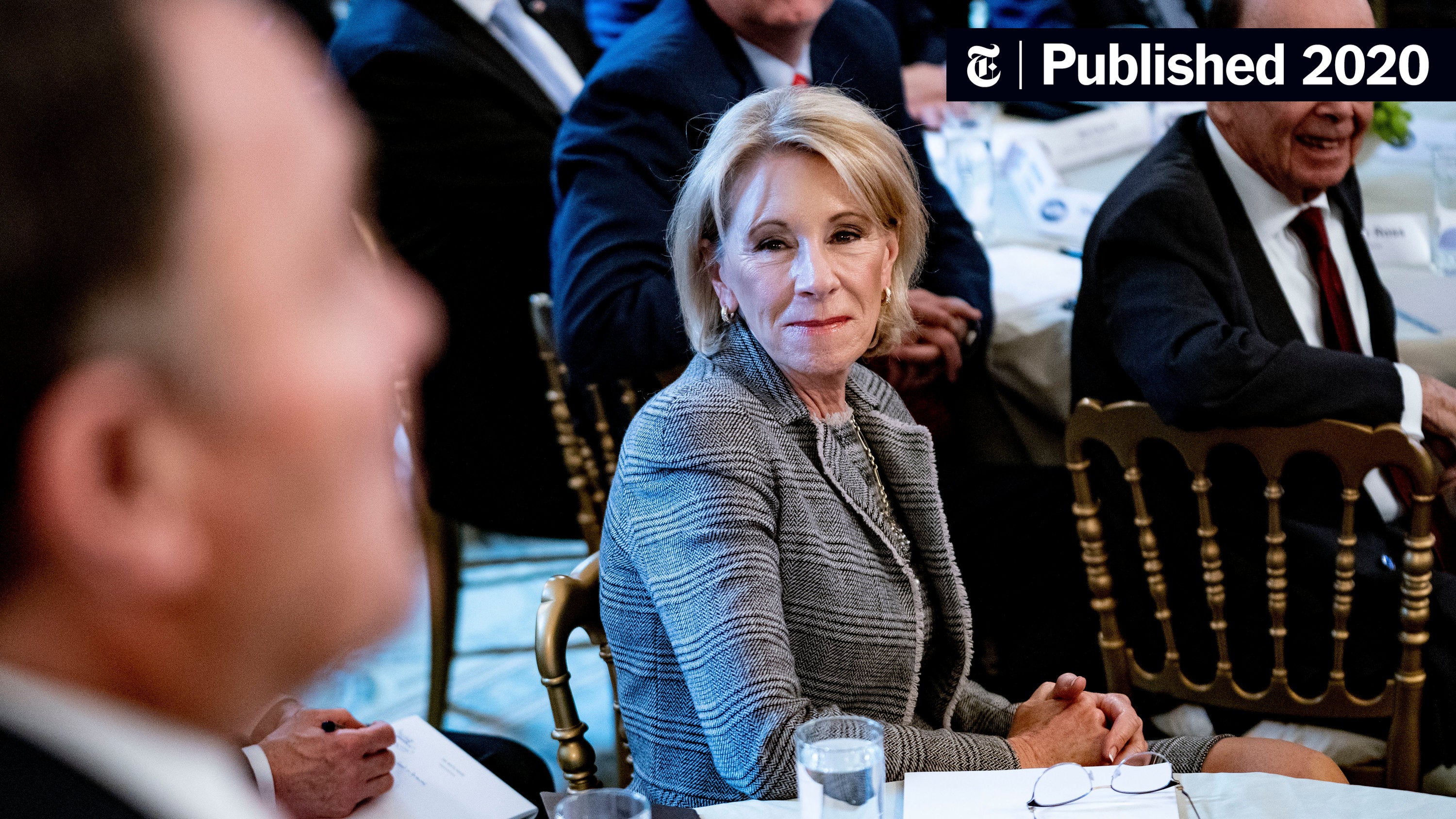The Implications Of A Privatized Student Loan System Under Trump

Table of Contents
Increased Costs and Interest Rates for Borrowers
A shift towards a privatized student loan system under the Trump administration would likely result in significantly higher costs for borrowers. Private lenders, driven by profit motives, would almost certainly charge higher interest rates and fees compared to the current government-backed loan programs. Unlike government loans, which often prioritize accessibility and affordability, private lenders are primarily focused on maximizing returns. This could lead to a situation where many students find themselves trapped in a cycle of debt, facing insurmountable repayment challenges.
- Higher interest rates compared to government-backed loans: Private lenders typically offer loans with significantly higher interest rates than federal loans, increasing the total amount borrowers ultimately repay.
- Increased fees and charges: Private loans often come with a range of additional fees, including origination fees, late payment fees, and prepayment penalties, further increasing the overall cost.
- Potential for predatory lending practices: Without stringent government oversight, the risk of predatory lending practices increases significantly. This could involve lenders targeting vulnerable students with unfavorable loan terms.
- Greater difficulty in refinancing loans: Refinancing options may be more limited and less favorable with private loans, making it harder for borrowers to consolidate debt or lower their interest rates.
Reduced Access to Higher Education for Low-Income Students
Privatization of the student loan system would disproportionately impact low-income students. Private lenders rely heavily on credit scores and financial history when assessing loan applications. Students from disadvantaged backgrounds, who may lack established credit or have limited financial resources, would face significantly higher barriers to accessing higher education. This could exacerbate existing inequalities and limit opportunities for upward mobility. The current system, while imperfect, at least attempts to ensure equitable access to higher education through government-backed loan programs.
- Stricter lending criteria: Private lenders often have stricter lending criteria compared to government programs, leading to higher rejection rates for applicants with less-than-perfect credit.
- Higher rejection rates for low-income applicants: Low-income students are more likely to be denied loans or offered loans with unfavorable terms, hindering their ability to pursue higher education.
- Exacerbation of existing inequalities in higher education access: A privatized system would likely widen the gap in access to higher education between wealthy and low-income students.
- Potential decrease in overall college enrollment: Reduced access to loans could lead to a decrease in overall college enrollment, impacting the future workforce and economic growth.
Impact on the Federal Budget and Government Spending
While privatization might appear to reduce government spending on higher education in the short term, the long-term consequences could be more complex. Eliminating government involvement doesn't eliminate the risk. The government might still need to intervene with guarantees or bailouts if the private student loan market experiences widespread defaults, potentially leading to increased costs to taxpayers. Furthermore, the loss of government oversight and regulation could create instability and inefficiencies within the student loan market.
- Potential savings for the government in the short term: Removing the government's role in directly providing loans could lead to initial budget savings.
- Potential for increased costs due to government guarantees or bailouts: If the private loan market falters, the government might need to step in to prevent a financial crisis, leading to unexpected costs.
- Loss of government oversight and regulation of the student loan market: Private lenders might engage in practices detrimental to borrowers without the safeguards provided by government regulation.
- Impact on government spending on other social programs: Increased costs associated with a privatized loan system could necessitate cuts in other vital social programs.
Changes in Loan Repayment Options and Forgiveness Programs
A privatized system could dramatically alter existing student loan repayment options and forgiveness programs. Income-driven repayment plans, which adjust monthly payments based on a borrower's income, could be significantly reduced or eliminated under a privatized model. Similarly, loan forgiveness programs, designed to alleviate the burden of student loan debt for certain borrowers, might face significant cuts or be completely abolished. This would lead to less flexibility and fewer borrower-friendly options.
- Reduction or elimination of income-driven repayment plans: Private lenders may be less inclined to offer flexible repayment options tailored to individual borrower needs.
- Limited access to loan forgiveness programs: Loan forgiveness programs are less likely to exist under a fully privatized system.
- Increased difficulty in managing student loan debt: Borrowers could face greater challenges in managing their debt without flexible repayment options and forgiveness programs.
- Potential for higher default rates: The lack of flexible repayment options and increased costs could result in higher default rates, further harming borrowers' credit and financial well-being.
Conclusion: Understanding the Implications of a Privatized Student Loan System
The potential privatization of the student loan system under the Trump administration presents significant risks and challenges. As outlined above, this shift could lead to increased costs for borrowers, reduced access to higher education for low-income students, potential instability in the federal budget, and a significant reduction in borrower protections. Understanding the potential consequences of a privatized student loan system under Trump is crucial for informed discussion and advocacy. We urge readers to research further and engage in discussions about the future of higher education financing. Consult resources from organizations like the National Student Loan Data System and the Consumer Financial Protection Bureau to learn more about your rights and options regarding student loan debt.

Featured Posts
-
 Anunobys 27 Points Lead Knicks To Victory Over 76ers Ninth Defeat For Philadelphia
May 17, 2025
Anunobys 27 Points Lead Knicks To Victory Over 76ers Ninth Defeat For Philadelphia
May 17, 2025 -
 Istrazivanje Ujedinjenih Arapskih Emirata Savjeti I Informacije Za Putnike
May 17, 2025
Istrazivanje Ujedinjenih Arapskih Emirata Savjeti I Informacije Za Putnike
May 17, 2025 -
 Novak Djokovic Yasin Oenemini Yok Sayan Performans
May 17, 2025
Novak Djokovic Yasin Oenemini Yok Sayan Performans
May 17, 2025 -
 Arenda Ploschadey V Industrialnykh Parkakh Tseny I Usloviya
May 17, 2025
Arenda Ploschadey V Industrialnykh Parkakh Tseny I Usloviya
May 17, 2025 -
 Apenas 4 Cursos Superam Avaliacao Do Mec No Vale E Regiao Veja Quais
May 17, 2025
Apenas 4 Cursos Superam Avaliacao Do Mec No Vale E Regiao Veja Quais
May 17, 2025
